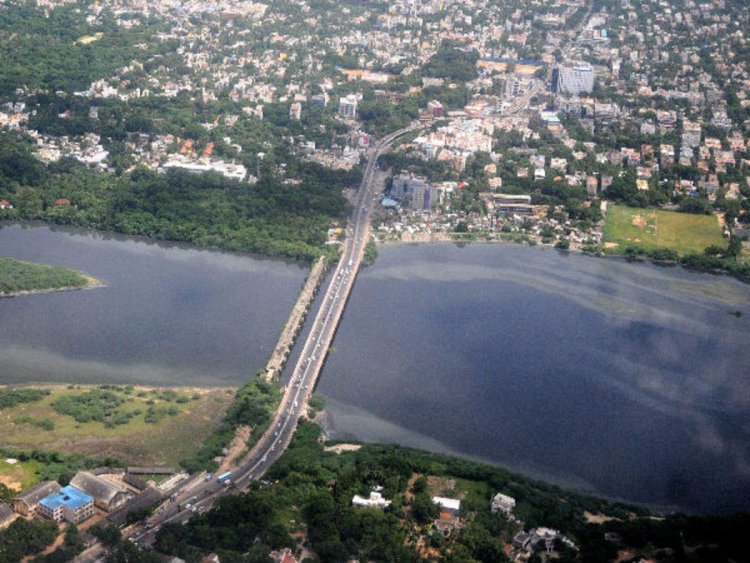Adyar River in Chennai Recovers After Long Time Government Investment

The long-suffering residents of Chennai have been living with two dead rivers, the Adyar and the Cooum, flowing through the heart of their city. These two rivers meander sluggishly through the city carrying sewage and dangerous pollutants. Besides these two rivers, there is the third one – the Kosasthalaiyar, which flows in the northern end of the city and is not as polluted as the other two. These three rivers flow east towards the Bay of Bengal.
A river is considered dead when it is incapable of sustaining any form of life – fish or aquatic plants, in it. This happens when the pollution level in the river is so high that all the oxygen in the water is depleted. The fresh water flowing through the Adyar and Cooum rivers are blocked upstream of the city and diverted to storage reservoirs for the city. The rivers also have sand bars blocking their mouth into the sea, thereby obstructing even the tidal flushing action from the sea.
The Tamil Nadu government has been working for a long time to restore the three rivers and several other water bodies in Chennai. Large sums of money have been allotted for this purpose but the progress has been slow. In the recent years, the government created a trust to coordinate a more concerted effort in cleaning the water bodies in the city.
The Chennai River Restoration Trust (CRRT) coordinates the work between various government departments, such as the Public Works Department (PWD), the Greater Chennai Corporation (GCC), the Chennai Metropolitan Water Supply and Sewerage Board (Chennai Metro Water), Tamil Nadu Slum Clearance Board (TNSCB) and some NGOs that are involved in this project. To facilitate the activities of the trust, a special purpose vehicle (SPV) under the Companies Act, 2013, called Adyar Poonga, was formed.
In 2019, the government allocated Rs 23.70 billion and Rs 13.70 billion this year for restoring and cleaning water bodies in Tamil Nadu. The government expressed its concern over the amount of raw sewage flowing through the river and allocated this amount mainly to clean the drains that empty into the river. However, the enormity of the problem is often difficult to comprehend.
Over the past three decades, the Adyar River has been used as a dumping site not only for building debris but for municipal as well as industrial waste. During the massive Chennai floods of 2015, the river was flushed clean. But once the flood waters subsided, it got polluted again.
Early on, the authorities realised that cleaning efforts by well-intentioned citizens would be of no use as the problem was too deep and a scientific approach was needed. In 2006, the Tamil Nadu government took cognisance of the problem and set up the Adyar Poonga Trust to protect and restore the three rivers, the Buckingham Canal and other water bodies in the city. The trust was later renamed as the Chennai River Restoration Trust (CRRT).
Of the 47 slums identified, 27 were within the project area from where families were to be resettled. There were 9,539 project affected families who were part of the resettlement and rehabilitation plan and have been shifted to tenements newly constructed by the TNSCB.
According to media reports, the fiscal outlay of Rs 23.70 billion in the state budget was primarily targeted at plugging and mitigating sewage flow into the Adyar, Cooum and the Buckingham Canals.
An official source said that 67 sewage outfalls into the Adyar river were identified. To plug these outfalls, it was necessary to lay interception and diversion pipelines and this task is being undertaken by the Chennai Metro Water. The project will reach completion in 2022, according to CRRT.
The CRRT is also planning to set up four modular sewage treatment plants (STPs). According to the tender document, the contract of the STPs was awarded in February this year at a cost of Rs 126.2 million.















































